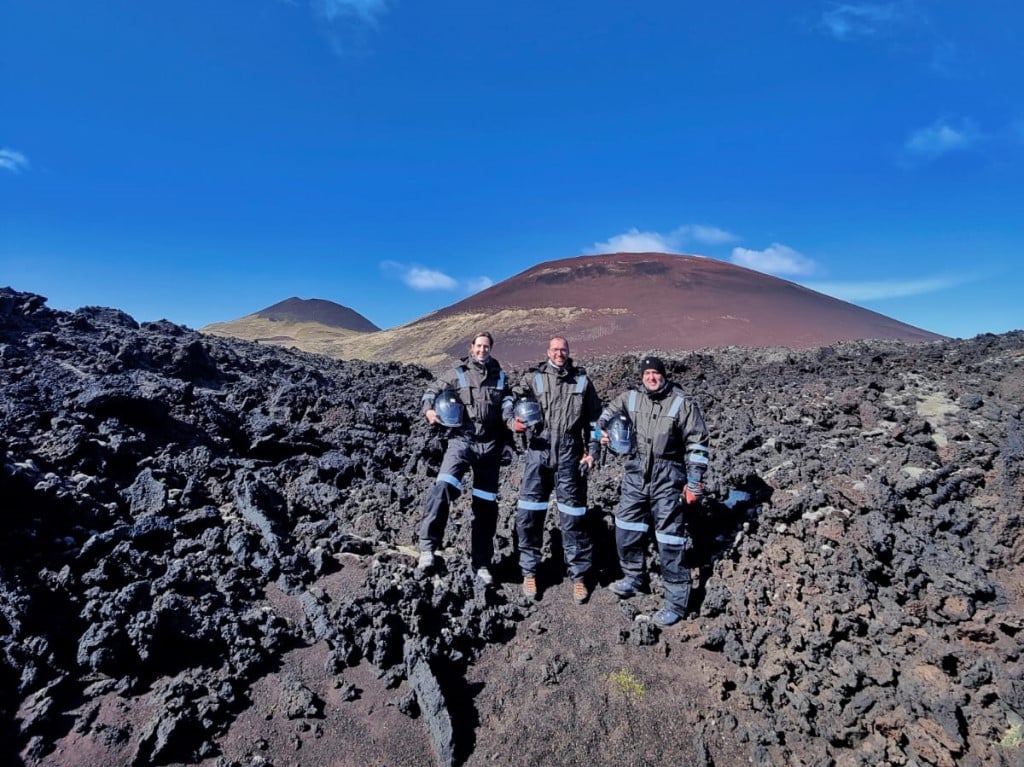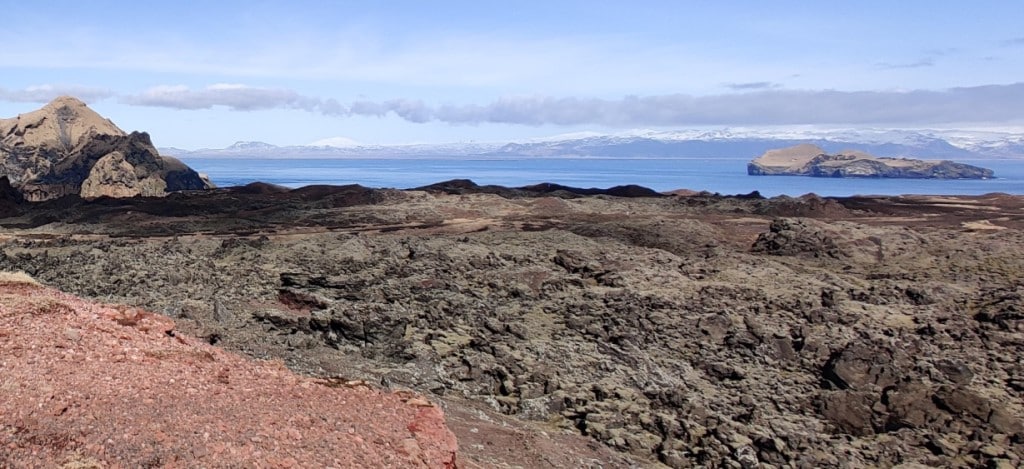A Volcano Day in Vestmannaeyjar: Exploring Eldfell and Its Surroundings
Over the course of its settled history, volcanic eruptions have been among the most destructive forces that impact our planet. Vast quantities of ejected ash, tephra and noxious gases can impact soil fertility and air quality, affecting our ability to grow crops and rear livestock. Magma flows burn everything in their path, forcing the relocation of communities and businesses.
Iceland is no stranger to tectonic activity and there are around 30 active volcanic systems in the country. Two of its volcanoes can be found in the Westman Islands. Monitoring of these environments is both thorough and ongoing; the smallest changes in activity are recorded and, as we’ve seen recently on the Reykjanes peninsula, decisions are promptly taken. The authorities ensure people’s safety is the top priority at all times even if the resultant action can be a little inconvenient.
Heimaey’s volcanic landscape
What this means, therefore, is that volcano tourism is possible on the islands – though of course nothing in life is absolutely risk-free. However it’s fascinating to tour Heimaey and explore some of its volcanic features. One of the most fun ways to do so is on our ATV tour, which takes in a number of the most interesting places on the island. What can you expect if you book a place?
The main attraction for any guest excited at the thought of exploring Heimaey’s volcanic landscapes is of course Eldfell. Though the ground looks like it’s been there forever, this volcanic cone was actually the product of the 1973 eruption. During those six months, vast quantities of magma poured out of a fissure in the ground, building new land as it cooled.

The consequences of the 1973 eruption for Heimaey
The eruption had come as quite a shock as there had been no volcanic activity for 5900 years. But a dormant volcano isn’t the same thing as an extinct volcano, no matter how long it has been sleeping. A cluster of earthquakes preceded the eruption but there was very little warning and next to no realisation that Heimaey’s residents would find themselves facing lava flows.
The consequences of the 1973 eruption for Heimaey were far reaching and profound, though there was no loss of life. All those who needed to evacuate were able to do so safely, though as 400 buildings were destroyed by the volcano some of them returned to the news they’d have to start over again.
One of these homes can be seen in the Eldheimar Museum, where it’s been preserved to illustrate the awesome and terrifying power of nature. This place helps provide the context to the eruption in the form of human stories, photographs and other exhibits that show how the island was affected by the sudden turn of events that January night more than fifty years ago.
It’s also worth climbing Eldfell for the views. At 220 metres high, it doesn’t take long to get to the top but you can see across to the mainland on days when there’s good visibility. If you aren’t up for the climb, setting your sights on the parking lot at the end of Eldfellsvegur gets you right within the lava field. Now that the lava has cooled – and lupines encroach upon its edge during the summer – it’s hard to imagine this being a river of molten rock.
For now, Eldfell is inert, a tangible reminder of what happened but no more dangerous to visit in its current state than any other Icelandic landscape. Our ATV tour is a must for anyone who’s keen to see Eldfell and understand the role it plays in Vestmannaeyjar history. Care to join us?
